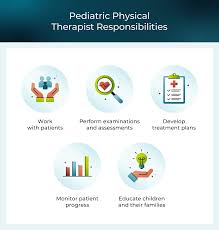
Physical therapists (PTs) play a vital role in helping people recover from injuries, manage chronic conditions, and improve their mobility and quality of life. It’s a career that blends science, patient care, and problem-solving, and becoming a physical therapist requires a strong educational foundation. If you’re considering a career in physical therapy Rexburg, here’s a clear breakdown of the education and training you’ll need.
1. Earn a Bachelor’s Degree (Typically 4 Years)
The first step to becoming a physical therapist is completing a bachelor’s degree. While there isn’t a specific undergraduate major required, most students choose fields that include coursework in:
- Biology
- Kinesiology
- Exercise science
- Health sciences
- Anatomy and physiology
These subjects lay the groundwork for the rigorous graduate-level education required later. Some physical therapy programs also require prerequisite courses in areas such as physics, chemistry, statistics, and psychology.
2. Complete a Doctor of Physical Therapy (DPT) Program (3 Years)
After earning your bachelor’s degree, you’ll need to apply to a Doctor of Physical Therapy (DPT) program. This is a graduate-level program typically lasting three years and is the standard degree required to become a licensed PT in the United States.
DPT programs are intensive and include:
- Advanced coursework in anatomy, biomechanics, neuroscience, and pharmacology
- Clinical skills training
- Hands-on lab experiences
- Several months of supervised clinical rotations in various healthcare settings
These programs are designed to prepare students not just academically, but also with the practical experience needed to treat patients effectively.
3. Pass the National Physical Therapy Examination (NPTE)
Once you graduate from an accredited DPT program, you must pass the National Physical Therapy Examination (NPTE) administered by the Federation of State Boards of Physical Therapy (FSBPT).
The NPTE is a comprehensive exam that tests your knowledge and readiness to practice safely and effectively. You must pass this exam to become licensed to practice physical therapy in your state.
4. Obtain State Licensure
In addition to passing the NPTE, each state has its own licensing requirements. You may need to complete a background check, pay a licensing fee, or take a jurisprudence exam that tests your knowledge of state-specific laws and regulations. Once you’re licensed, you can begin practicing as a physical therapist.
5. Consider Specialization or Continuing Education
While not required, some PTs choose to specialize in a particular area of care, such as:
- Orthopedics
- Pediatrics
- Sports physical therapy
- Geriatrics
- Neurology
- Women’s health
These specialties may involve additional coursework, clinical experience, and certification through the American Board of Physical Therapy Specialties (ABPTS). Continuing education is also essential throughout a PT’s career to maintain licensure and stay current with the latest practices.
Becoming a physical therapist takes dedication, time, and a commitment to helping others but the rewards are well worth it. From undergraduate studies to the doctoral level, each step builds the knowledge and skills needed to make a lasting impact on people’s lives.
If you’re passionate about movement science, patient care, and lifelong learning, a career in physical therapy might be the perfect path for you.